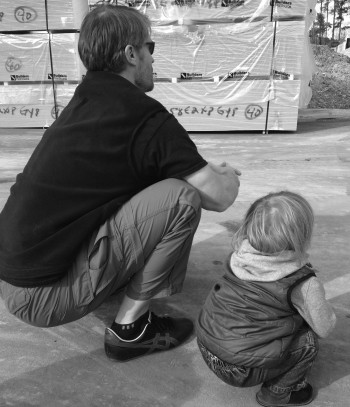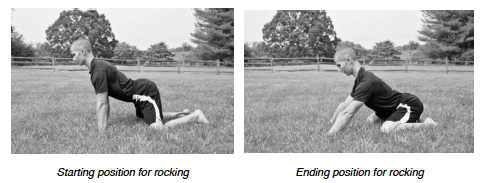To Squat Or Not To Squat?
Sep 09, 2015

I have a love/hate relationship with the squat.
When I first started lifting weights, way back in 1989, I completely ignored my legs and only trained the upper body.
Why?
Most likely ignorance.
That and for me at the time, squatting was hard.
I have no idea why.
For many people squatting is hard.
Why?
Because they can’t do it.
At least not any more.
They once could.
Most view the squat as an exercise. That’s true. It is. But more than that, it’s a fundamental and foundational developmental movement. We are designed to squat. And most, if not all of us, squatted at one time, when we were wee ones.
It’s common to see little kids - from about the age of 14 months or so - squat down to play with whatever it is they are playing that’s on the ground. It’s a resting position. And it’s one that we’re meant to maintain throughout life.

Why don’t we retain it?
Many reasons, but primarily because we sit in chairs for most of our lives, starting when we are little kids starting school.
The problem with chairs is that they are like artificial wombs. Your postural reflexes no longer have to work and the muscles of your pelvic floor no longer work correctly. Your joints stiffen up and your posture changes - degrades. As a result, you lose your ability to do what you’re naturally supposed to do.
Why Squatting Is Important
So what’s the big deal about losing your ability to squat?
Simple - it’s not only a sign of health, but also it’s a way to keep your lower body strong as you age.
Furthermore, if you decide to make it an exercise that’s part of a routine, then you’ll want to make sure you’re still able to do it correctly.
But what if you can’t?
How do you get your squat back?
Simple.
Rocking.
Rocking is part of the developmental sequence - the sequence we all go through to get up and running (literally). One of the things rocking does is create the double-S curve of the spine that gives us our upright posture, particularly the curve in the lumbar spine (lower back). As we sit, our posture deforms and degrades. So rocking, for adults, restores our posture. It also restores function of the pelvic floor, which gets tight and stiff in most people from sitting all day long, and prevents people from squatting.
In order to rock correctly, simply focus on keeping your head up and your chest out, while breathing in through your nose into your stomach. Shift your weight forward onto your hands, and then back onto your knees. Just makesure you don’t let your lower back round out.

Start with your feet underneath you - with your toes pointed away, called plantarflexion. Progress to having your toes pulled under you - called dorsiflexion.
Perform as much rocking as you’d like. Start with 10 to 20 reps at a time. You may need some padding under your knees if they hurt while rocking.
Rocking is arguably one of the best ways to restore your squat.
If it doesn’t, you may need to incorporate other resets or some of the regressions. You can learn the regressions at any of our upcoming Pressing RESET workshops.
Give rocking a shot, get your squat back, and restore your health.
Comments (0)
Please login to comment.